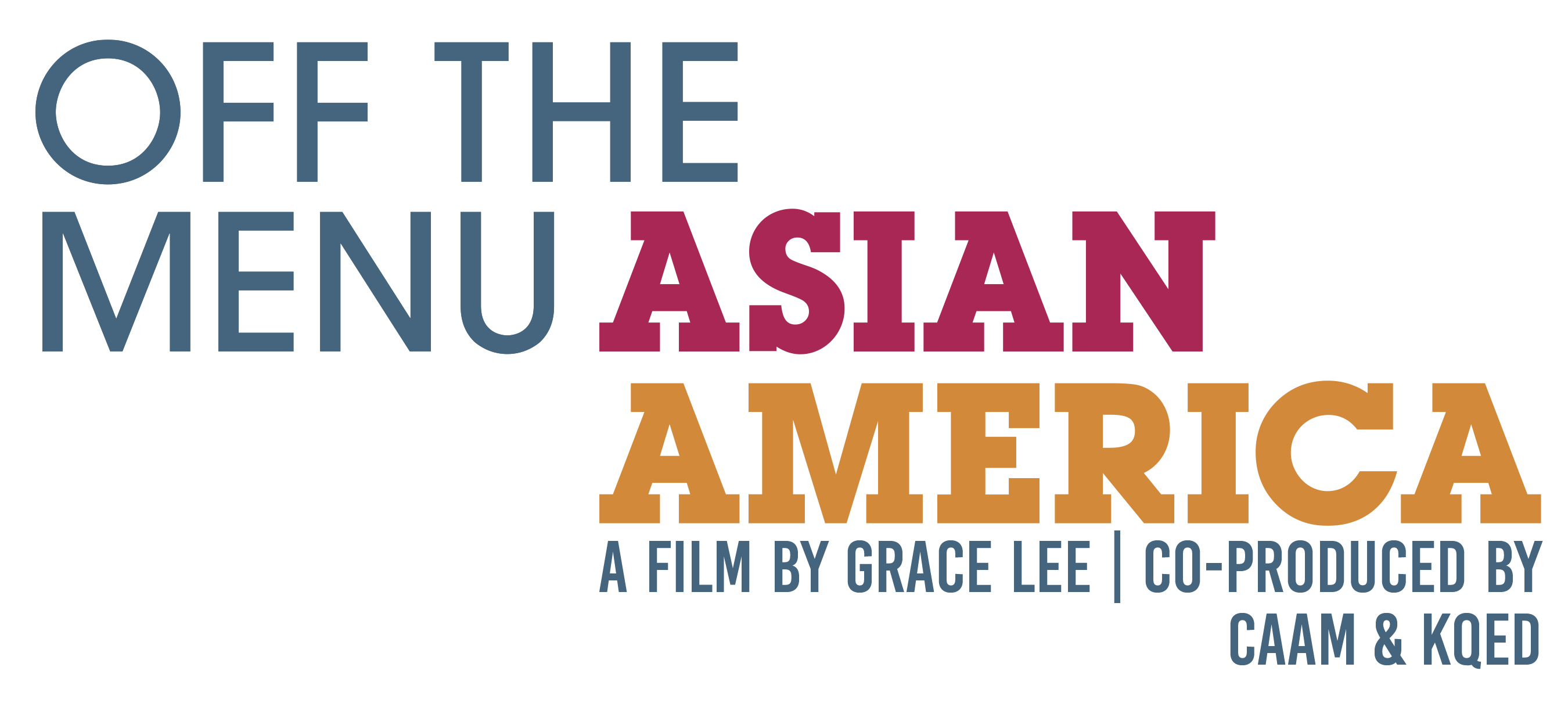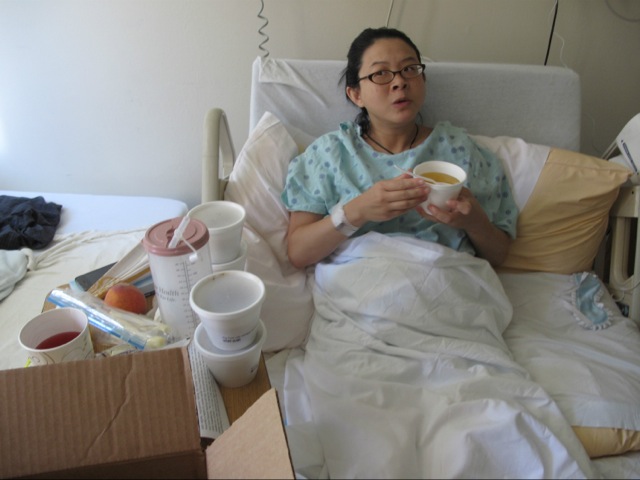A foodie’s take on traditional Chinese postpartum food
First came the liver, then the kidneys, then pigs feet—lots and lots of pigs feet.
In the early weeks after my daughter was born, each morning I would nurse her while my husband, the “seagan” (vegan, eats seafood), went outside and gathered dozens of containers filled with food from our doorstep.
“Ooh!” I would squeal. “What’d I get today?”
“Looks like guts again.”
“You mean organ meat. Good. I love organ meat.”
For a meat-loving foodie like me, all this stuff was like manna from heaven: ginger braised liver, kidney congee, pigs feet in black vinegar, chicken stew, papaya sparerib soup and more.
I washed it down with pungent herbal teas that smelled like warm primordial forests.
My daily dose of animal parts was a gift from my mother to us—to me—for birthing her first grandchild. For the price of $1,800, some may have opted for baby bling from Tiffany’s, but my mother wanted this for me and so did I: a month of food delivery service—dishes prepared according to ancient Chinese recipes designed for postpartum recovery.
“I want you to have the best,” my mother said during my last trimester, calling me from my childhood home in New Jersey. “I can’t be there to cook for you. Besides I don’t know how to make the right dishes.”
The “right dishes” are the teas, stews, and other food that make up the culinary portion of zuo yuezi (坐月子) or “sitting the month.” Also called “confinement,” zuo yuezi is a set of traditional customs dictating what a woman should and should not do the first month after she has a baby. Dating back at least 2,600 years, today zuo yuezi is practiced by women across China, Taiwan, and Vietnam, and their diaspora.
Among its top purported benefits: helping the mother heal and recover, and setting a lifelong foundation for health and beauty.
I broke most of the zuo yuezi rules: I went out. Took showers. Washed my hair. Drank ice water. Looked at screens. Luckily, my mother didn’t care. We both agreed: it was all about the food.
“I didn’t get to do it,” my mother said when I first balked at the price. “We were new to this country. We didn’t have money and no one could cook the dishes. Maybe if I had done it my health would be better today.”
What made me want to try it: A) I mostly believed in the recipes’ healing powers, B) I wanted to use it as a chance to deepen my connection with my mother and heritage, and C) Hell, I wouldn’t have to cook for a whole month.
Most of all, it was the food itself. These were some of my favorite dishes, serious comfort food. So much of it, especially the organs and pigs feet, reminded me of meals my parents cooked while I was growing up. When it came to meat, we pretty much ate every part of the animal. Why waste anything when even the bowels and butt can be made into tasty morsels? Confinement food also reminded me of dishes I’d only had in Taiwan and China in my relatives’ homes and made me feel closer to my extended family overseas.
Plus, I just love the satisfying chewiness of organ meat, the slight gaminess and how its textures range from silky smooth (hearts) to rough (tripe). Sinking my teeth into large wads of liver and kidney fulfills some sort of primal foodie desire in me, something that, as someone who’s been a partner to (and cook for) a “seagan” for the past ten years doesn’t get met that often. (Sorry, babe.)
I have fond memories of sitting before a whole cooked chicken with my mother as she poked around with her chopsticks looking for the giblets like a Forty-Niners miner searching for gold. Once she extracted a precious nugget—a heart, gizzard, or liver – she’d place it on my plate. I knew how much she loved the innards too, so, recognizing that sacrifice, I’d gobble it up with gratitude.
According to Chinese medicine, confinement foods primarily serve to nourish and replenish the blood and give the body more yang, or warmth, through “warm” foods. Ginger, Chinese angelica root (dang gui), red beans (adzuki), and sesame oil provide warmth. Pigs feet, peanuts, and papaya boost breast milk. Liver replenishes lost blood. Kidney eases pain. Longan promotes sleep. Red dates nourish blood. Goji berries enhance qi and tonify the blood.
The company I hired, Liu Mama in Hayward, is one of many in California that provides zuo yuezi food services. Each delivery included breakfast, lunch and dinner, as well as teas and desserts. It came to about $20 a meal, including tax and delivery.
One of the main reasons I chose Liu Mama was this: On my second day post-birth, a round-faced woman from Liu Mama drove up to Berkeley and showed up at the side of my hospital bed—with samples. We had told her earlier that I’d try their food at home before signing the contract, but she insisted it was crucial to start right away. I will never forget how deeply comforted I felt as I scarfed my way through the samples after having eaten nothing during labor and then only hospital food, sipping the woodsy black fungus soup, followed by moist sticky rice flecked with ham, then wrapping my lips around sticky pigs feet. Suddenly I felt much better about having spent the last day pushing eight pounds of human flesh through my cervix. I also felt much closer to my parents who were still back home in Jersey. I signed on the spot.
That mix of nostalgia, both real and imagined, stayed with me. Every so often, as I inhaled my food post-breastfeeding in my Berkeley home, I imagined the women before me devouring similar textures and tastes during this special time in their lives.
I can’t prove if the food replenished and cured me in all the alleged ways, but I do know that in that first month if I was ever hungry, which was pretty much always, there was a fridge full of some of my favorite food waiting for me.
There is, however, a widely held belief that I feel the need to debunk: that if you eat confinement food you will look better than before you had a baby. I just checked the mirror again. Uhm sorry, but no. (Some may argue that this would have worked if I followed all the “sitting the month” rules, but after a year of sleep deprivation due to newborn, I highly doubt it!)
Now, three and a half years later, I sometimes find myself craving those special dishes. It’s almost enough to make me want to have another baby (but not quite!).
These days I’m the one fishing through whole chickens looking for giblets to give to my daughter. (I swear one of the top benefits for me of having a kid is that finally I have someone to enjoy meat with every day.) I’m usually disappointed, as most chickens today don’t come with giblets. (Where is the gold mine of all the missing giblets?) When I do buy one that comes with the precious gooey, bloody parchment-enclosed package, I boil it up and serve it to my kid. “This is love,” I say, putting it on her plate. “Hai yao xin!” she squeals after downing it all. The heart is her favorite.
If the package happens to come with an extra heart, I give mine up.
“Now that’s sacrifice,” I tell my husband.
“Feeding your kid the guts?’ he’ll say.
I shake my head because there are some things that just can’t be explained.
—Sharline Chiang
Sharline Chiang is a writer, editor and book coach based in Berkeley, originally from New Jersey. She is a proud, long-time member of VONA, a nationwide community of writers of color. Sharline’s writings can be found in BuzzFeed, Ozy, Hyphen and Mutha. She thanks CAAM for the chance to write a piece that alludes to one of her favorite snacks that can only be found in Taipei street markets—grilled chicken butt.
 This story is a part of Off the Menu: Asian America, a multimedia project between the Center for Asian American Media and KQED, featuring a one-hour PBS primetime special by award-winning filmmaker Grace Lee (American Revolutionary: The Evolution of Grace Lee Boggs), original stories and web content.
This story is a part of Off the Menu: Asian America, a multimedia project between the Center for Asian American Media and KQED, featuring a one-hour PBS primetime special by award-winning filmmaker Grace Lee (American Revolutionary: The Evolution of Grace Lee Boggs), original stories and web content.

